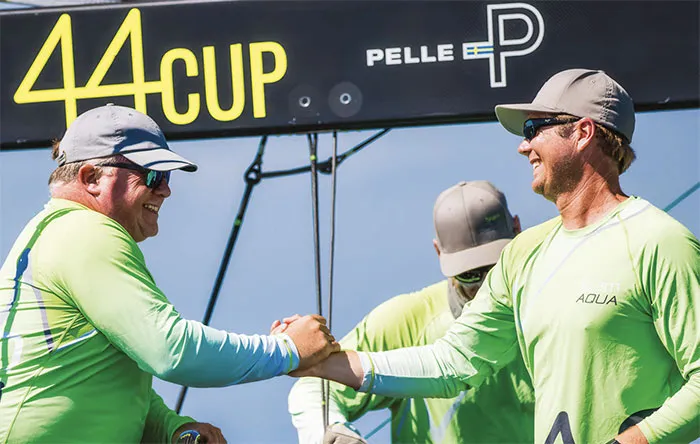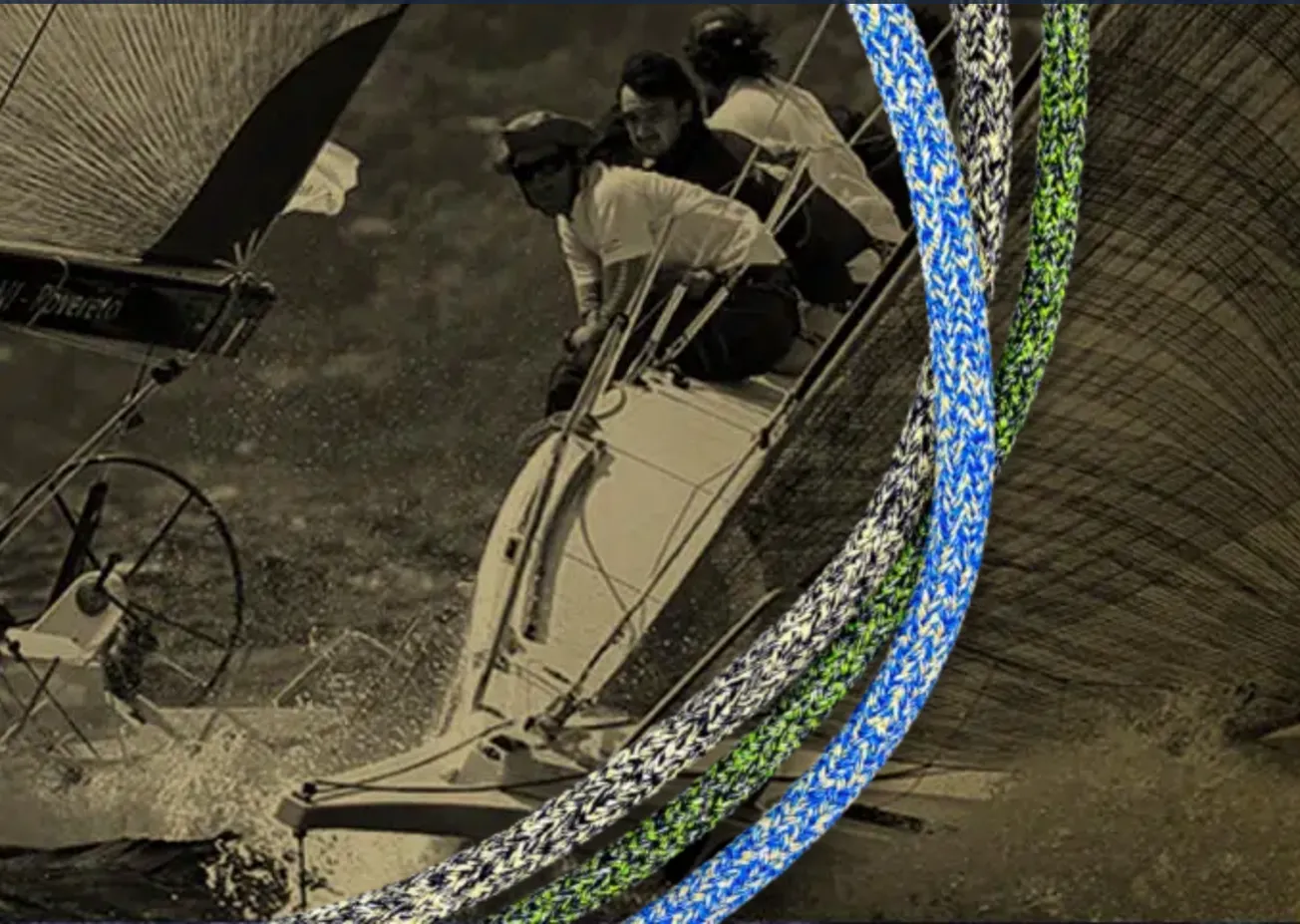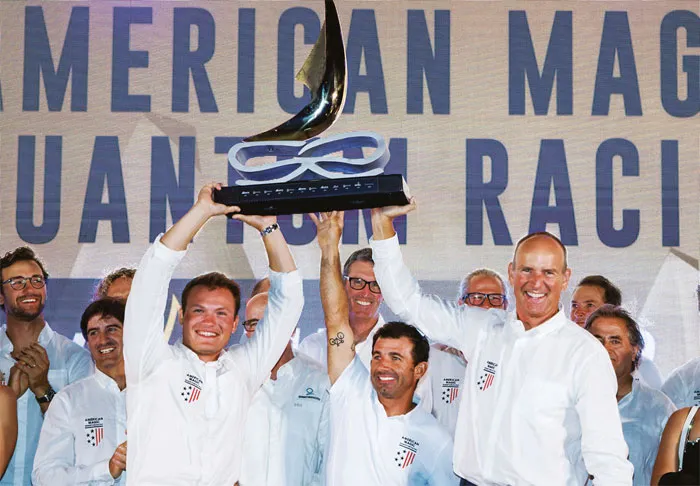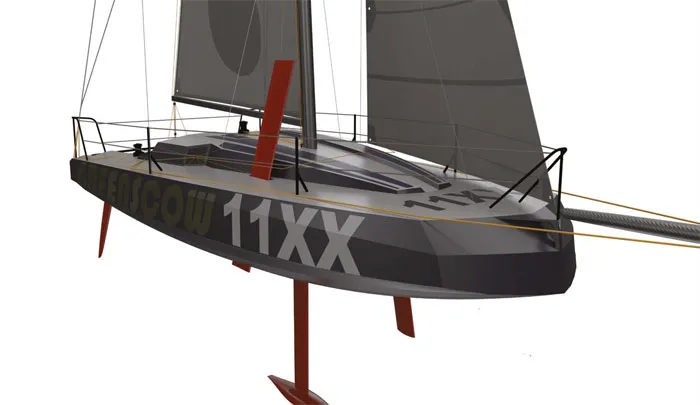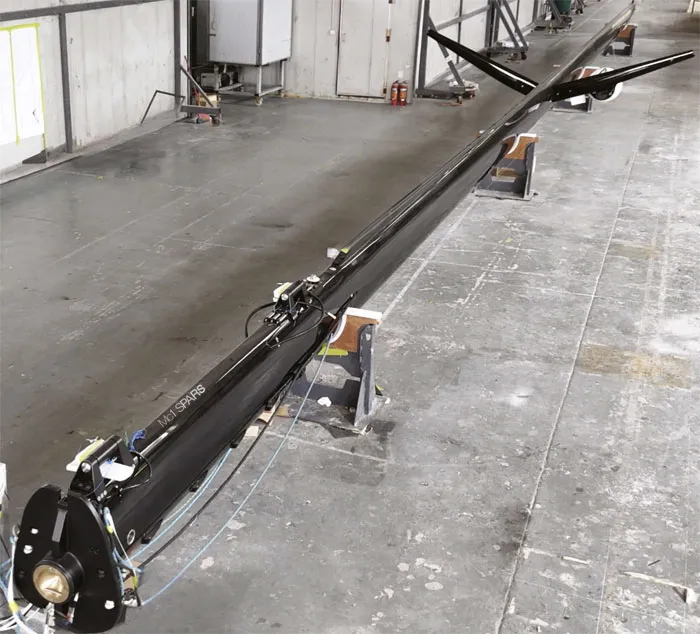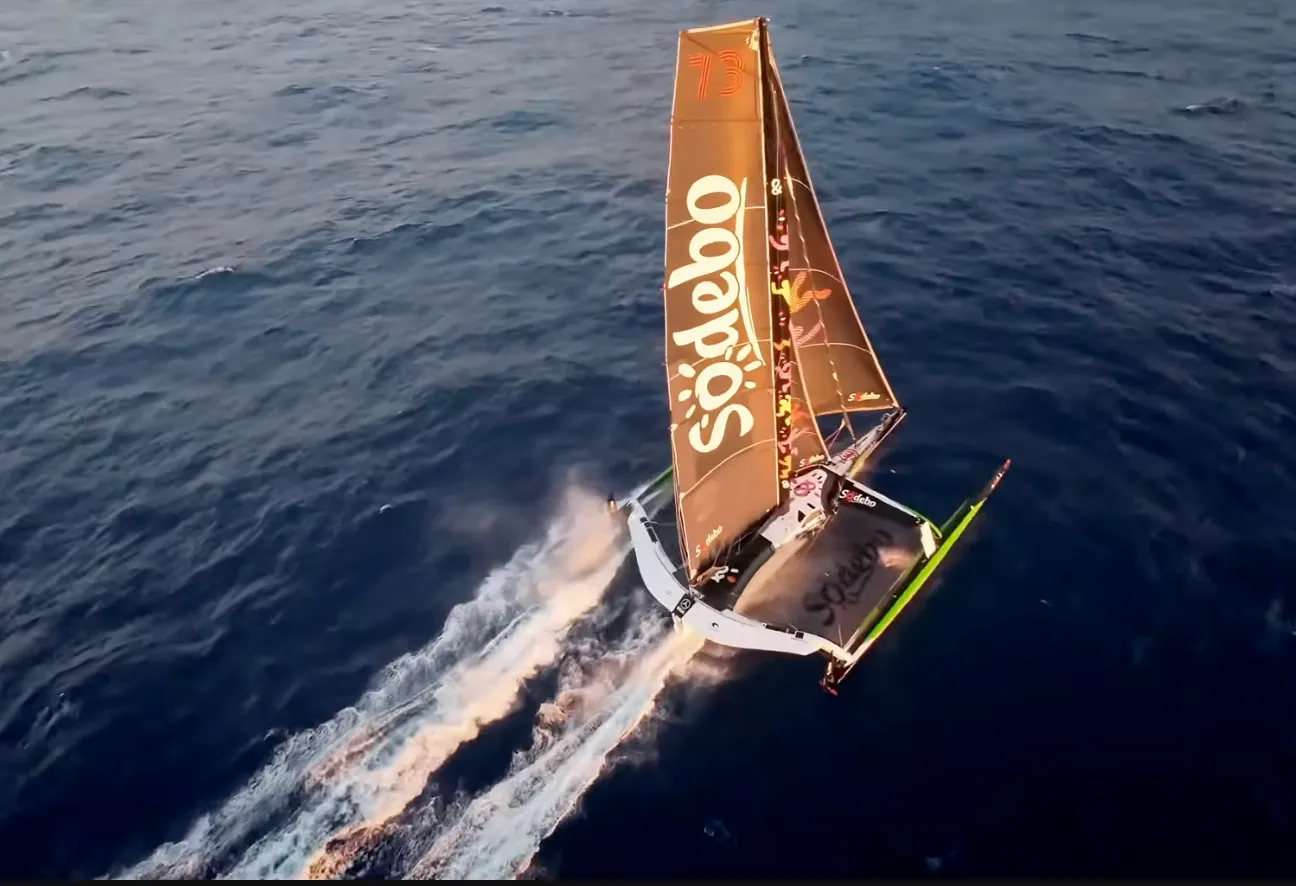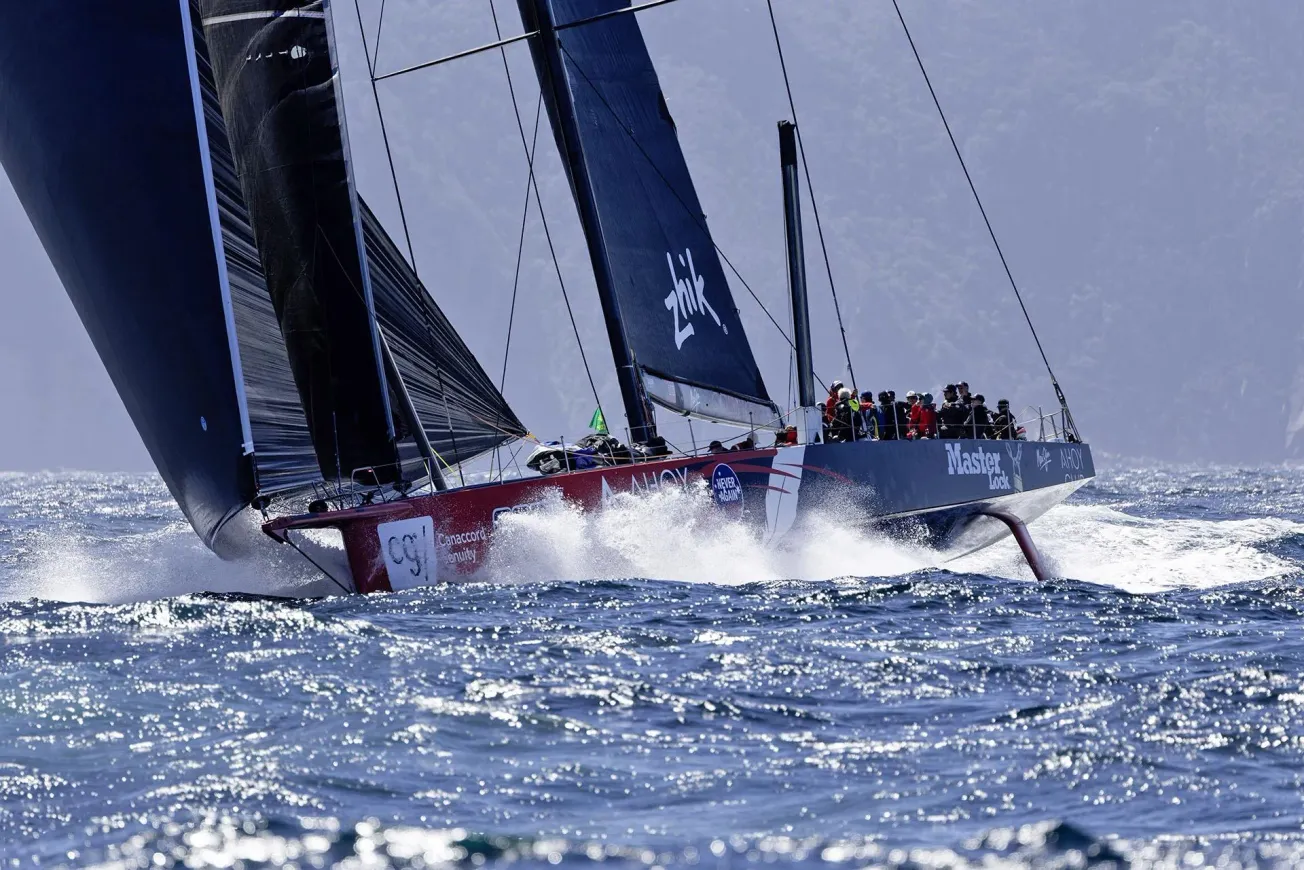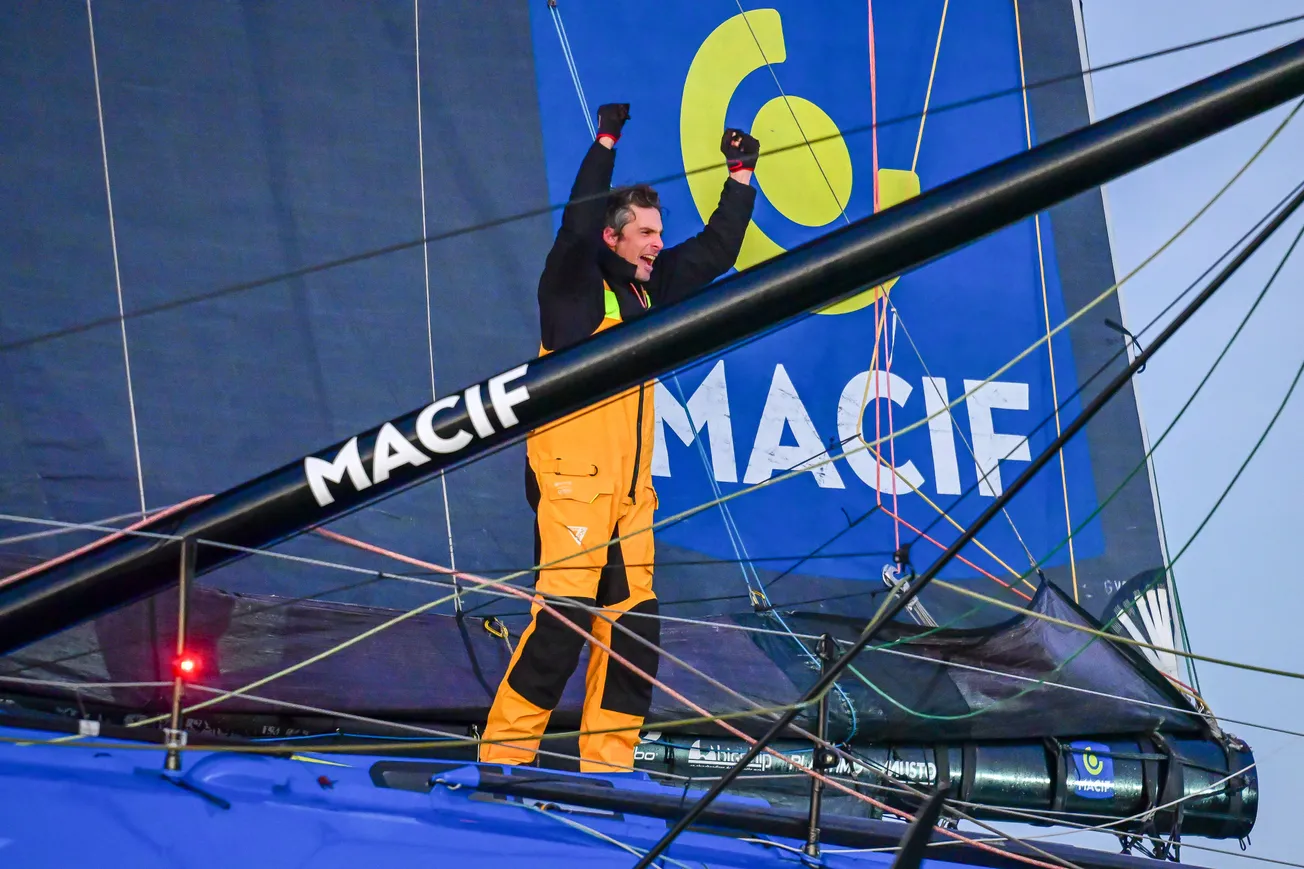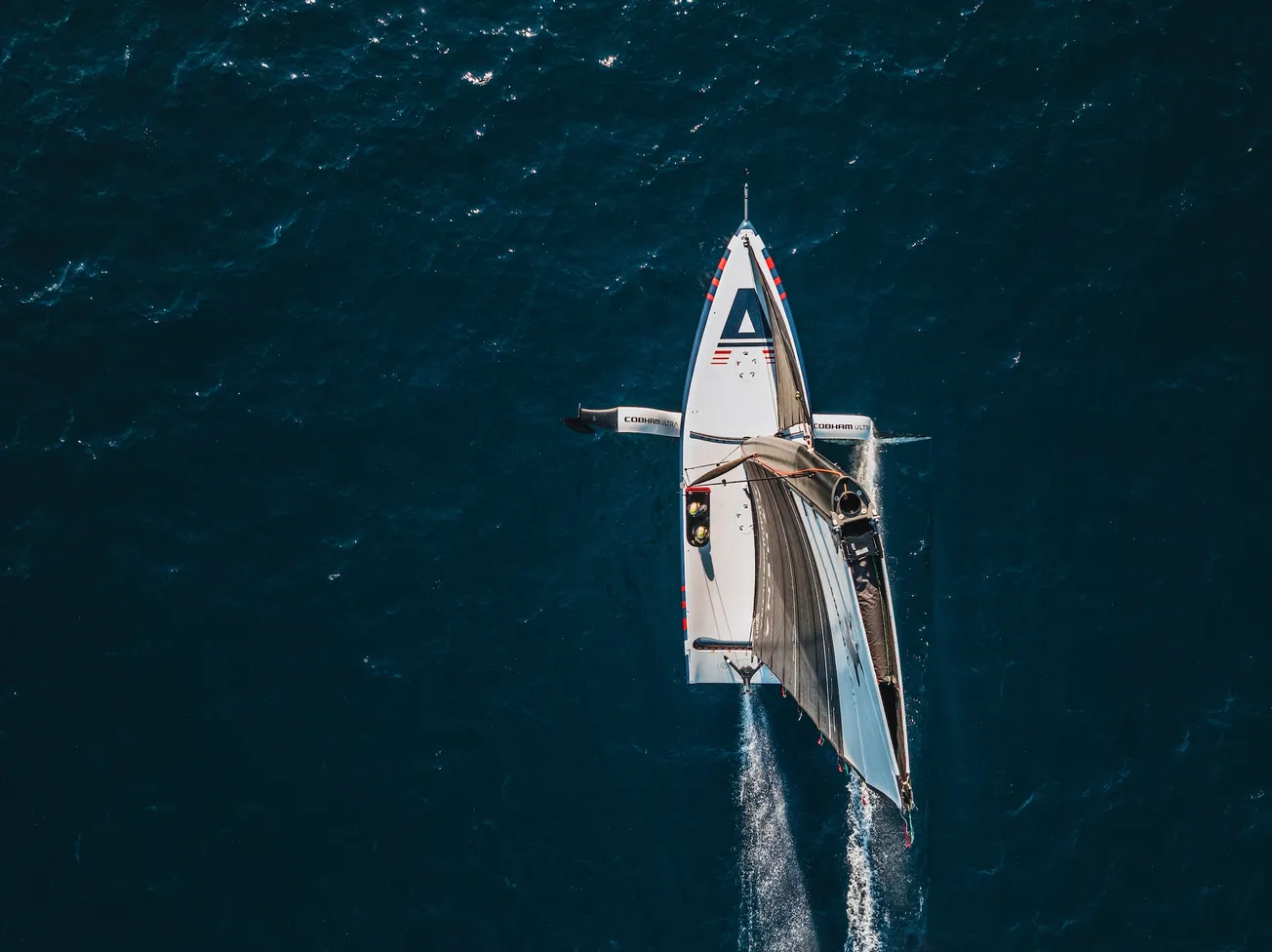


Any analysis of Cameron Appleton’s sailing career will quickly establish a consistent theme of loyalty and team before ego. While Appleton, who is a Doyle Sails partner at the Newport, Rhode Island loft, has worked constantly to advance his skills as a master tactician and helmsman, the goal has always been to better serve the teams and owners he races for.
Appleton’s loyalty and work ethic are probably best demonstrated in his ongoing relationship with Chris Bake and the Team Aqua crew in the RC44 circuit. He signed up as Bake’s tactician for the inaugural owner-driver regatta in 2007 and has been with him ever since.
Over their 19-year relationship, Team Aqua has won six fleet racing championships, two world championships and three match race titles. Appleton has been on board for every RC44 regatta bar one – when he was recovering from hip replacement surgery.
Commenting on the longevity of the Team Aqua and other sailing relationships, Appleton says it is about setting the right priorities. ‘I believe we must always be aware of why we are there, how we got there and always put the owner’s ambitions and goals at the forefront of our minds.
‘One of the greatest gifts is that we get to play at the sport we love. We get to do things with our teammates and friends, but first and foremost it is about working to achieve the team’s objectives and delivering on the expectations the owner sets out for us. The respect that comes from that builds your trust and your bond.’
Appleton’s ethos and team spirit were recognised in his teens as he progressed from the Royal New Zealand Yacht Squadron’s renowned youth training programme onto the international match race circuit – where he was a bright-eyed young skipper battling America’s Cup superstars like Russell Coutts, Chris Dickson, Paul Cayard, Peter Gilmour, Ed Baird, Rod Davis, Dean Barker and others. It was a tough school but a vital stepping stone to his ultimate goal of making it into the America’s Cup arena.
Peter Blake, who led New Zealand to its first America’s Cup victory in 1995 and also its first successful defence in 2000, always had an eye out for promising up-and-comers. He would watch closely to identify those who took any opportunity – however unglamorous – to apply themselves, through hard work and positive attitude, to advance the team’s cause.
For the 2000 Cup defence in Auckland, Blake gave Appleton his opportunity, driving one of Team New Zealand’s chase boats through the long months of training. For a kid just one year out of high school, it was an invaluable education in big time campaigning and working within a large team with some of the best sailors on the planet.
And it paid off. Blake liked what he saw and two years later, when it came to the America’s Cup Match itself, Appleton – then at the tender age of 21 – was elevated to the racing crew.
Three years later and under new leadership, Team New Zealand was plunged into crisis with an exodus of top sailors to rival syndicates. Faced with a big money contract from an American team, Appleton remained true to his values and helmed the Kiwi team’s second yacht, serving as trial horse and sparring partner throughout the Defender campaign.
Over the succeeding decades he has built a strong career on the grand prix racing circuits, including the 52 Super Series, superyachts, maxis, RC44s, Farr 40s, Farr 30s, Melges 32s and more.
Major projects for 2025 include continuing as tactician with Team Aqua in the RC44 series and similar roles with the Italian Alkedo crew in the 52 Super Series and the RORC White team aboard the American-owned Pac52 Final Final in the revived Admiral’s Cup.
In his tactician role he has to accommodate different scenarios and approaches, depending on whether he is standing next to an owner-driver or a pro-driver. ‘You have to shape yourself from regatta to regatta for each situation, each owner and each team,’ he says.
‘If I look back, my early career was mostly helming boats in match racing formats. Then it evolved to working as tactician alongside owners and also in fully professional line-ups. There was a period of three to five years of learning to adapt to that new role and learning to verbalise every move and situation that can arise in the course of a race, whether on inshore tracks or offshore passages.
‘It is one of those situations in which you never stop learning. Every time you are on the water, you learn new things.’ The tactician’s role is highly complex. Part coach, part strategic adviser, he must mentally synthesise constantly shifting equations of boatspeed, heel angle, true wind speed, direction and angle, the geometry and surrounding geography of the course, what the opposition is doing, best approach to the next mark of the course, how to profit from the next windshift… and translate it all into a steady stream of calm, concise, clear communication.
The tactician’s paradox and dilemma is that, although sailing is a matter of responding to all these variable inputs, winning races is about anticipating and reading the situation more accurately than the opposition. ‘You have to always be one step ahead of the game,’ says Appleton, ‘always thinking ahead and talking before the information is actually required.
‘With a professional helmsman the situation is a bit different. It is more about the positioning element and providing the information they will need to make their own decisions about finessing the boat, positioning in the pre-start, at mark roundings and so on.
‘In that case, it is not about talking about how close to push the opposition and that sort of thing because they will be constantly assessing the rules that apply and how to come out ahead in a developing situation.’
Alongside his pro-racing career, Appleton’s expertise has been sought after by major sailmaking brands. He is in the almost unique position of having worked for the three rival sailmaking companies – North, Quantum and Doyle – which recently all came under the ownership umbrella of North Technology Group, where they continue to operate as independent rivals.
‘I remain very respectful of all three brands,’ says Appleton. ‘They all have incredible records.’
However, last year an opportunity arose to join the Doyle Sails team in a partnership role alongside Alex Clegg, Dave and Rob MacMillan and North Technology Group in his home town of Newport.
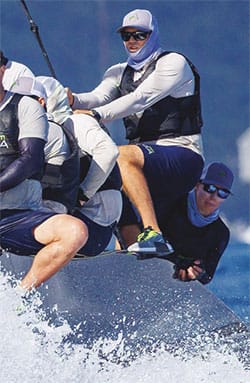
‘Doyle Sails’ creativity in their products and designs and what they have achieved has been very impressive. I have sailed with their sails and against them. I have always had a lot of respect for how they have positioned themselves in the game against much bigger players, who operate at much bigger volumes.
‘Doyle Sails has made a virtue out of being smaller, more bespoke and more personally driven, forming close relationships with owners and teams,’ he continues. ‘I find that really appealing. ‘I like the camaraderie and the whole “by sailors, for sailors” attitude. That is not just a slogan; it is totally genuine.’
This circles back to those values of loyalty and integrity that Appleton has pursued from a young age. ‘It is about honouring your word. If you mean what you say and do what you say, that carries a lot of weight in this sport. It is very important.’
All of which carries over into his business philosophy. Appleton is relishing having an ownership stake in the Doyle Sails Newport loft. ‘You help drive decisions, set goals and tasks ahead, constantly looking to the future and where we want to get to. We are all about sailing and having that involvement on both sides of the game helps tie it all together.’
He takes particular pride in the Doyle Sails Newport operation. ‘Our loft has some fantastic sailmakers,’ he notes. ‘We have 12 on the floor, five of them women and we produce many sails in-house.
‘We do all our spinnakers locally, while for the upwind inventory, the Stratis blanks are produced in New Zealand and then all the finishing is done here in Newport. It is nice to be associated with a true loft from the ground up. There are not many of those around anymore and we are one of them.
‘We are one of the primary grand prix finishing lofts for Doyle Sails, so right now, we have about 20 sails on the floor just about ready to go, whether it is for the Admiral’s Cup, TP52s, Maxis, Maxi72s. We even produce the occasional Dacron sail if that is appropriate for the specific application.’
Although Appleton still has strong connections with New Zealand, Newport has been home for about two decades. He met his American wife Nichole 25 years ago when she was backpacking in New Zealand and he was revelling in his first America’s Cup.
They have two children, Ella and son Blake – whose name is yet another mark of loyalty and respect. It goes back to that breakthrough opportunity when Peter Blake opened the door to sailing at the highest level. After that 2000 Cup defence,
Sir Peter, who was knighted for his sailing achievements, embarked on a new environmental mission but was tragically murdered during an expedition on the Amazon River.
‘He was very influential in the early part of my life and career,’ Appleton acknowledges. ‘It is very sad that he is not around to see what has become of all the people he affected and influenced and where they have ended up in the sailing world.
‘He had a huge positive impact on others. That will always resonate with me.’


